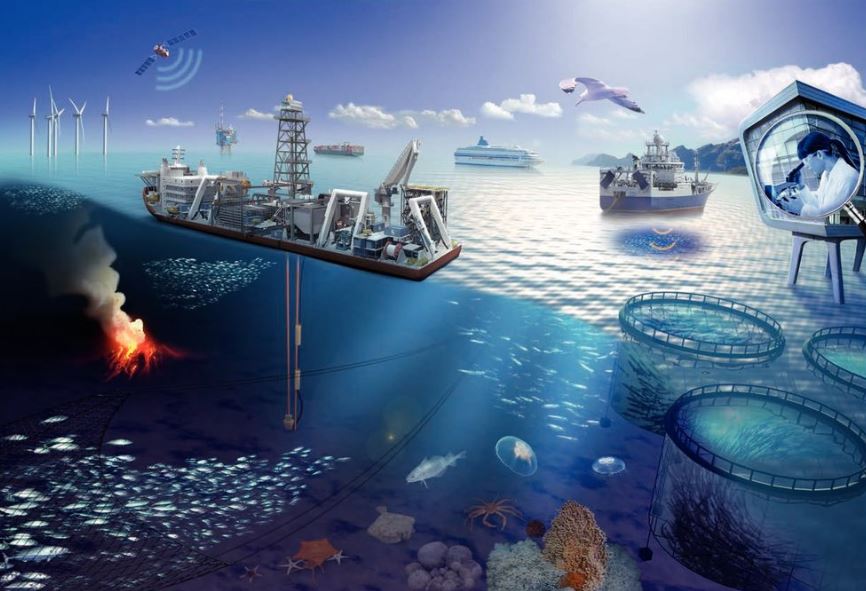Font size:
Print
Global Initiative ‘Revive Our Ocean’ Launched
Reviving Oceans through Community-led Protection
Context: On April 24, 2025, a major new global initiative, ‘Revive Our Ocean’, was officially launched with the aim of empowering coastal communities to lead marine conservation efforts.

More on News
- The program focuses on scaling up effective, community-led marine protected areas (MPAs) by removing barriers that prevent local stewardship of ocean resources.
New Wave of Ocean Conservation
- Community-Driven: ‘Revive Our Ocean’ is grounded in proven community-driven models from around the world.
- Countries: Initially, the initiative will target seven countries: the United Kingdom, Portugal, Greece, Turkey, Philippines, Indonesia, and Mexico.
- Effective Protection: The initiative is designed to inspire, equip, and support communities to create and manage marine protected areas more effectively.
- KMGBF: It seeks to address the urgent need to protect marine biodiversity in line with the 30X30 target of the Kunming-Montreal Global Biodiversity Framework (KMGBF) — an ambitious global goal to conserve 30% of the world’s oceans by 2030.
Urgent Need for Stronger Marine Protected Areas
- Currently, over 16,000 MPAs exist globally, covering approximately 8% of the world’s oceans, according to the Protected Planet Report 2024.
- However, only 3% of these areas are under full protection.
- Many MPAs are poorly managed and still permit damaging activities such as bottom trawling, which devastates marine ecosystems.
- Marine Protected Areas are critical for safeguarding marine biodiversity, supporting fisheries, enhancing carbon sequestration, and boosting local economies through tourism.
- They are managed through various models, including national governments, local authorities, NGOs, or co-managed with communities.
Success Stories of Community-Led MPAs
Examples of thriving community-led marine protected areas offer strong evidence of their benefits:
- Medes Island in Spain features a small, one-square-kilometer no-fishing zone that generates €16 million annually from diving tourism — 25 times the revenue from fishing in the same area.
- Isle of Arran in Scotland saw seabed biodiversity double after establishing a no-fishing zone, also revitalizing adjacent fishing waters.
- In the Philippines, the RARE’s Fish Forever program enabled over 2,000 communities to set up no-fishing zones, doubling fish populations within just five years.
- Coastal 500, a network of over 350 local leaders, collaborates to promote policies such as banning industrial fishing near shores.
Tackling the Barriers to Community-Led Marine Protection
- Despite proven success stories, community-led MPAs remain rare. According to the ‘Revive Our Ocean’ team, three major barriers stand in the way:
- Lack of awareness about the benefits of MPAs.
- National policies restricting local governments from establishing MPAs.
- Insufficient tools, training, and financial support for communities.
- To overcome these challenges, ‘Revive Our Ocean’ has launched the Revive Our Ocean Collective, a network of local leaders and organizations who have pioneered successful community-led marine conservation.
Financing and Ending Destructive Fishing Practices
- A major feature of ‘Revive Our Ocean’ is its upcoming microfinance program that will offer loans and grants to communities wishing to establish or expand MPAs.
- Ending destructive practices like bottom trawling is another top priority.
- Bottom trawling not only devastates marine habitats but also leads to an annual economic loss of €11 billion in Europe alone.
- Contrary to the belief that MPAs are financial burdens, they can actually be self-sustaining investments.
- In Spain, a marine reserve costing €2 million a year to manage delivers €16 million in returns through tourism and sustainable fisheries.
Subscribe to our Youtube Channel for more Valuable Content – TheStudyias
Download the App to Subscribe to our Courses – Thestudyias
The Source’s Authority and Ownership of the Article is Claimed By THE STUDY IAS BY MANIKANT SINGH


